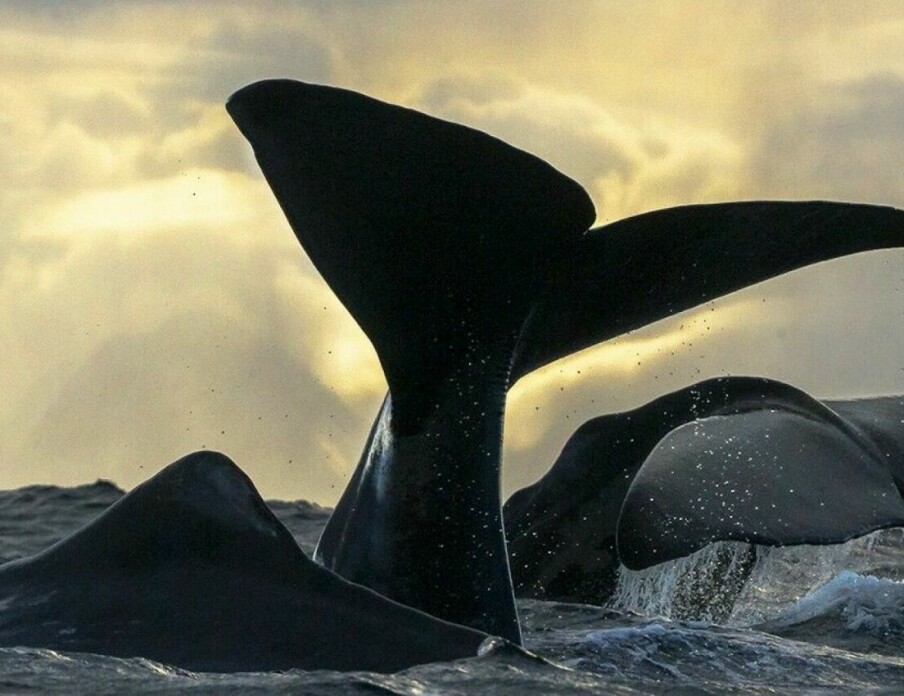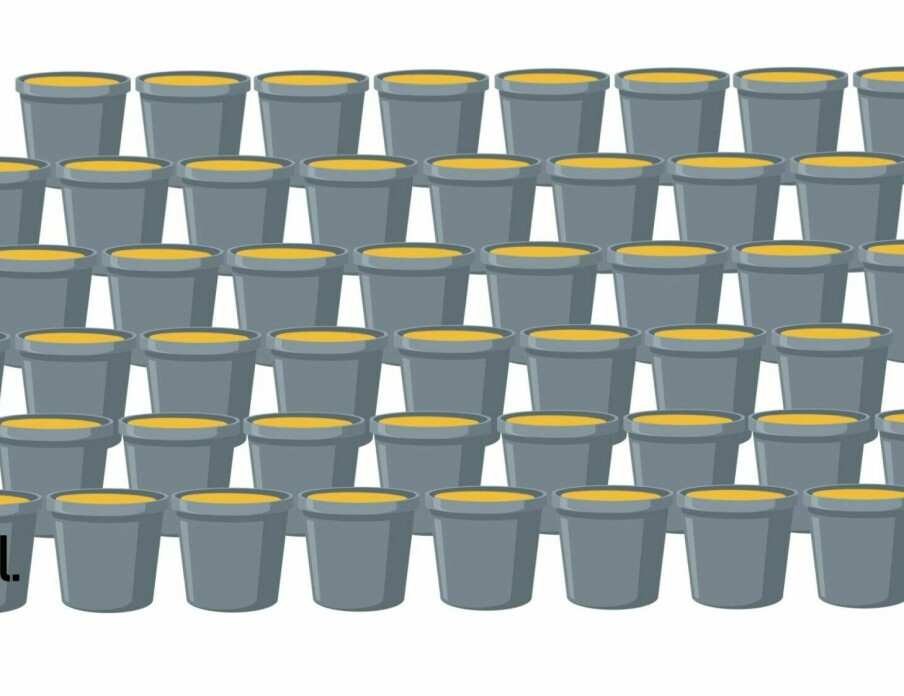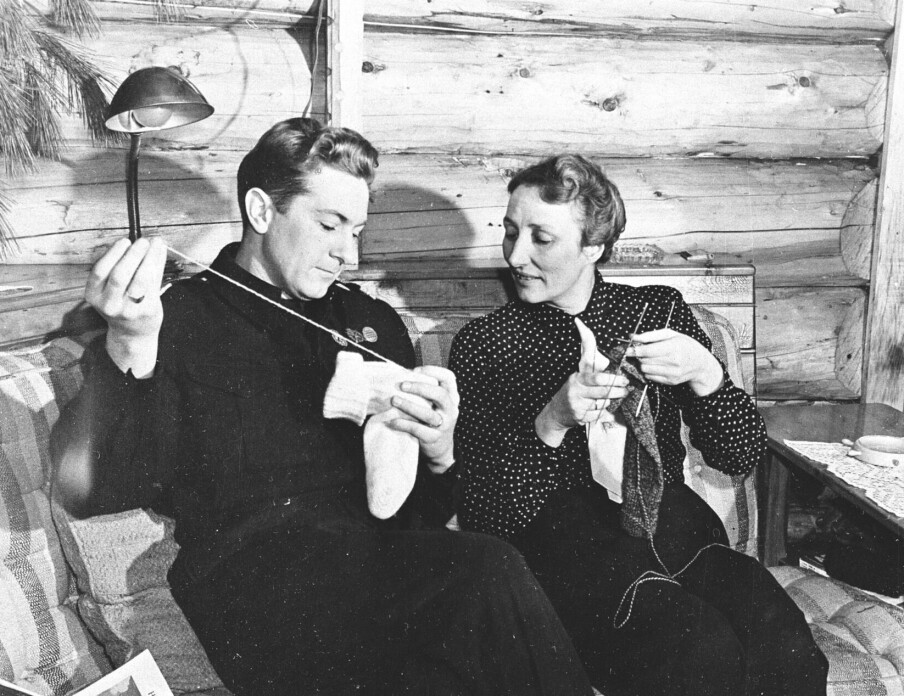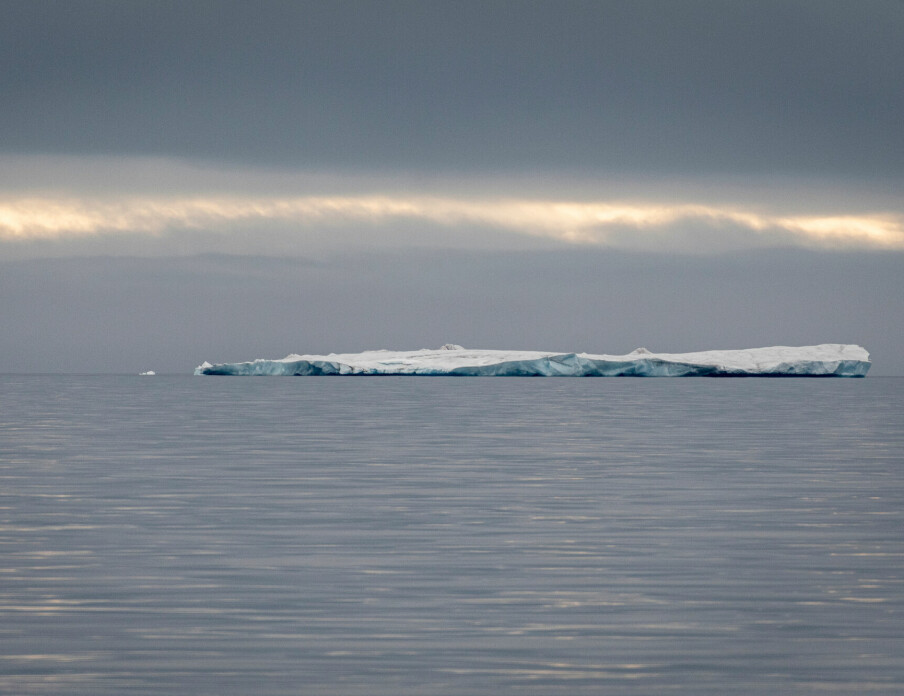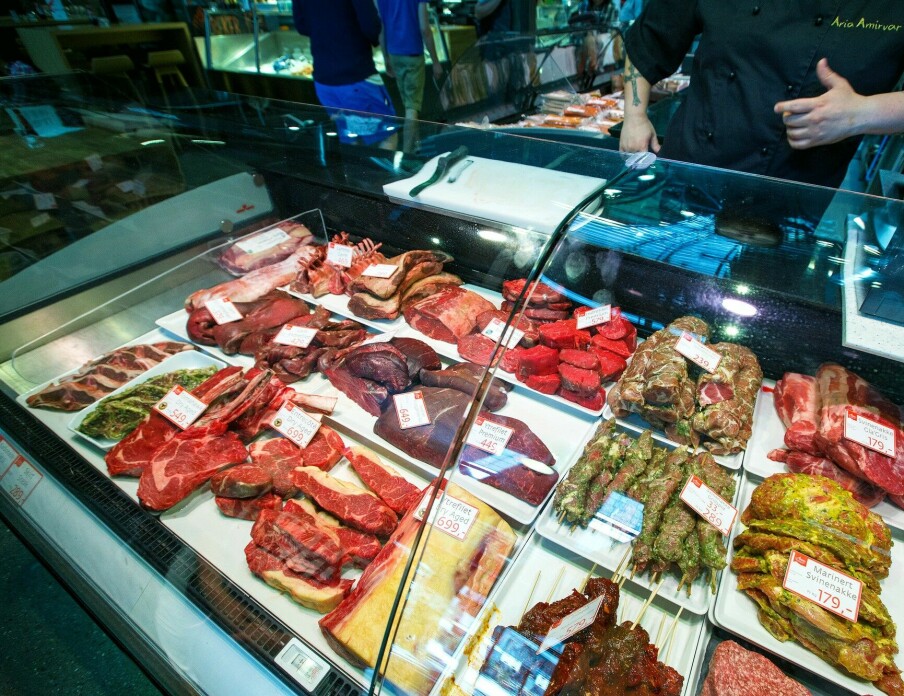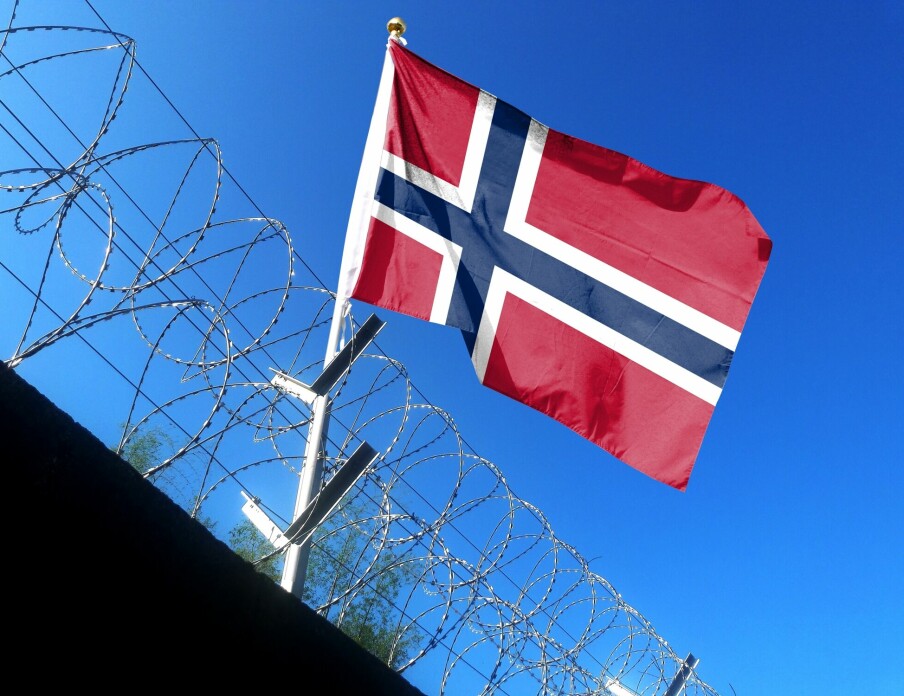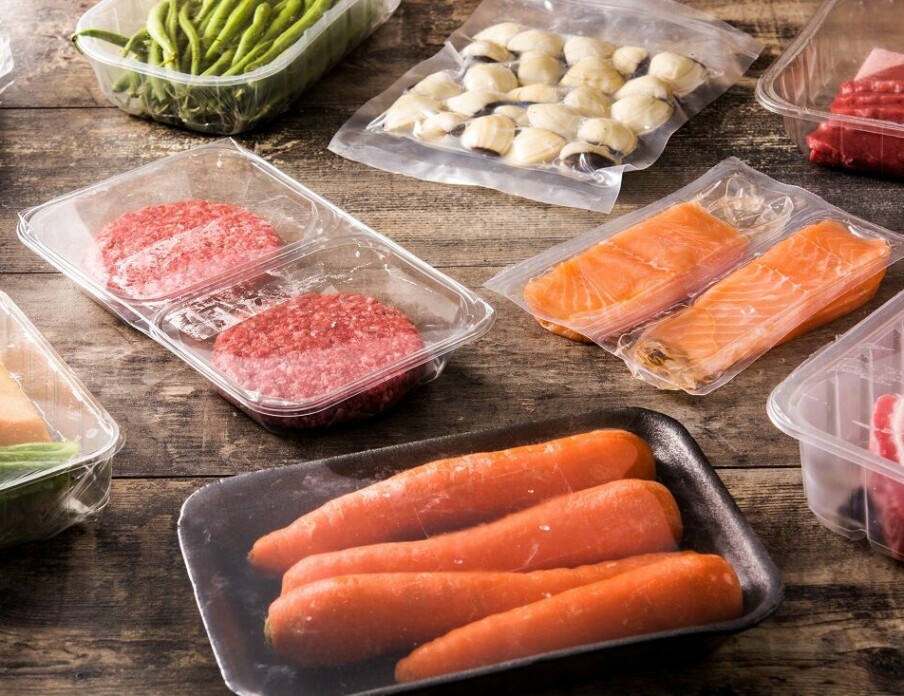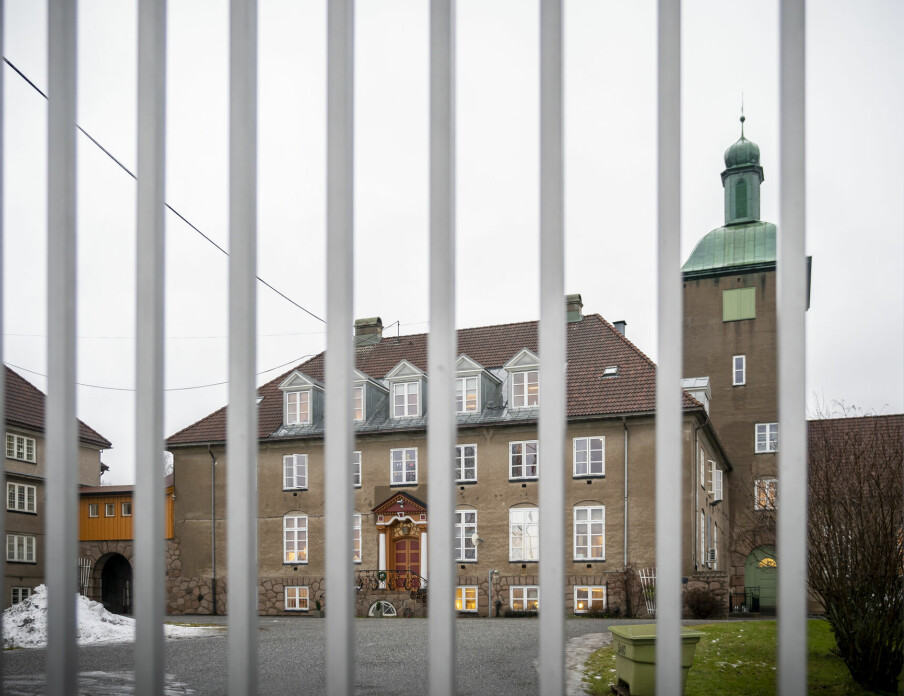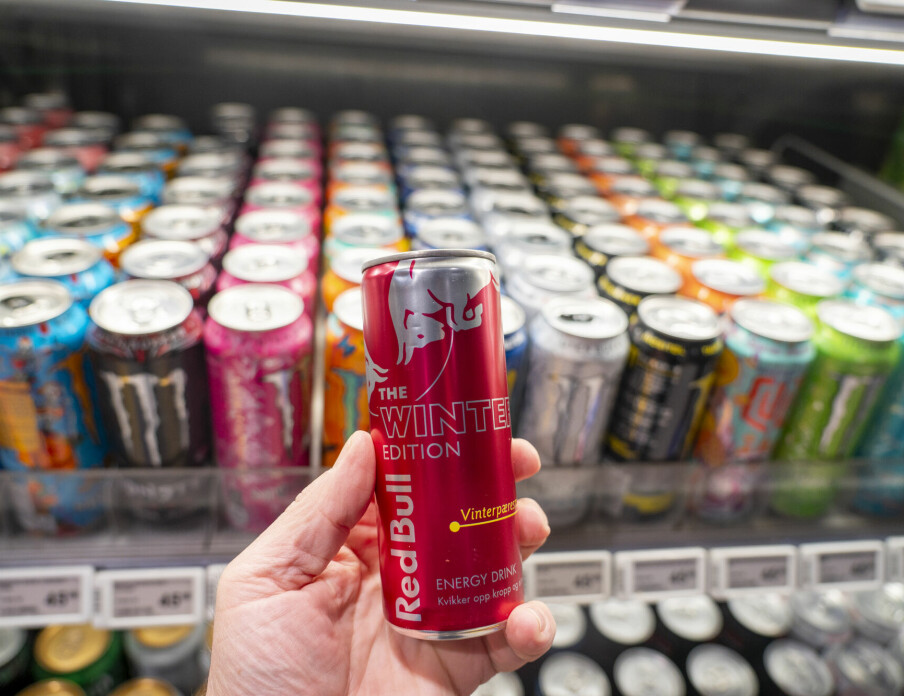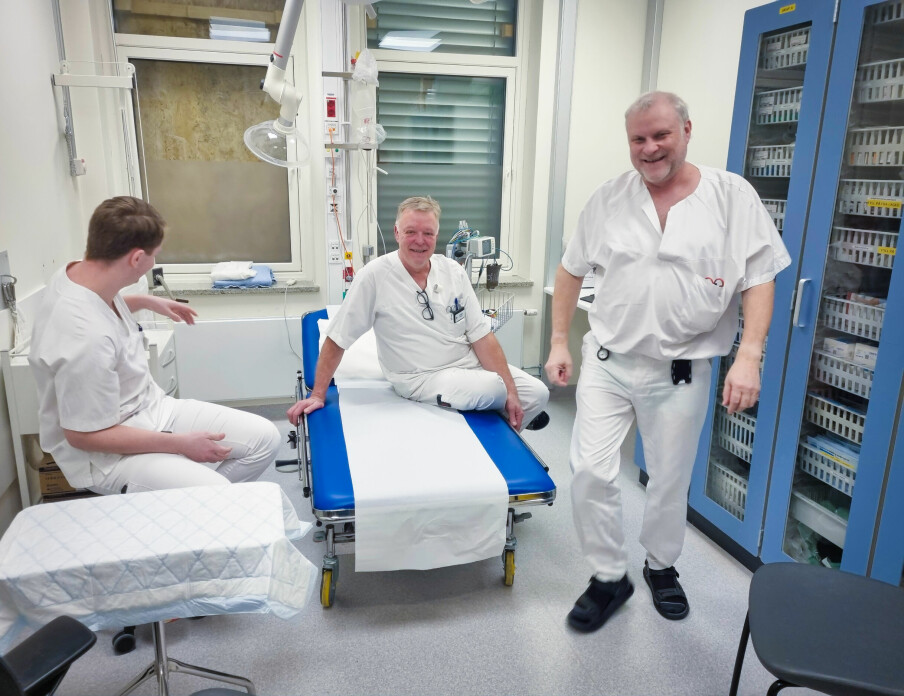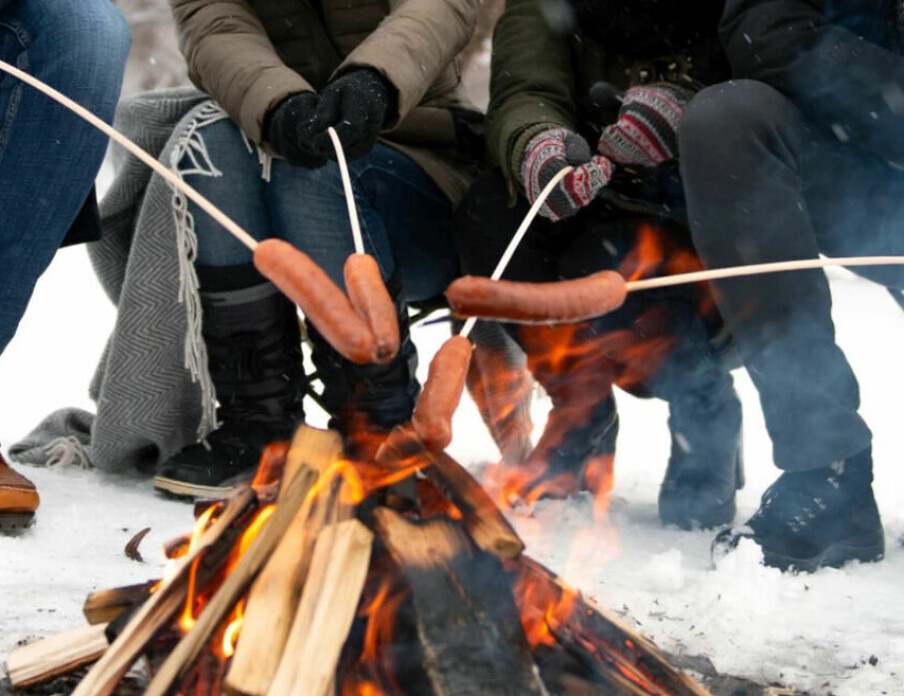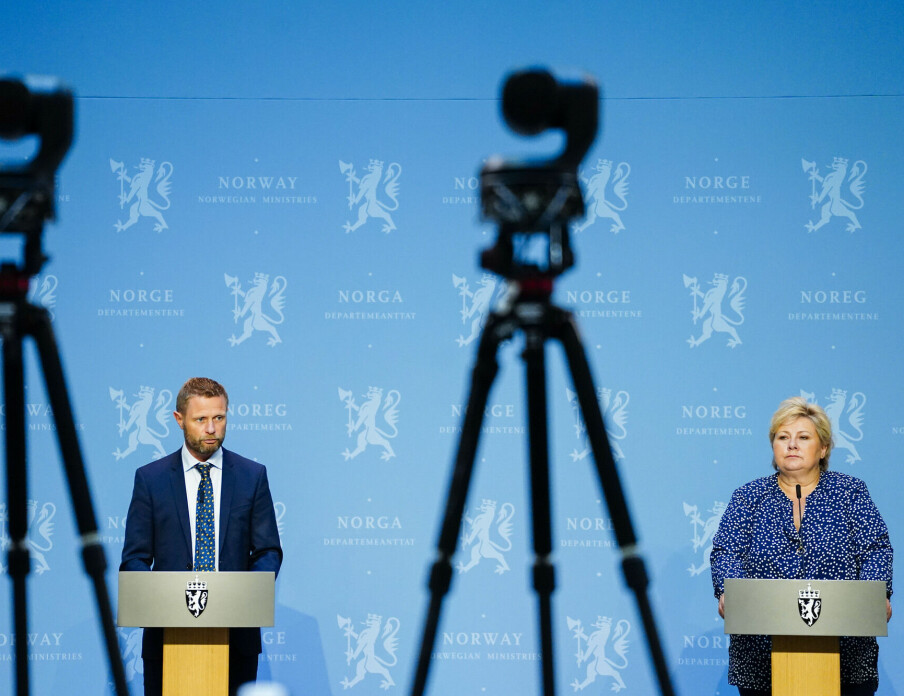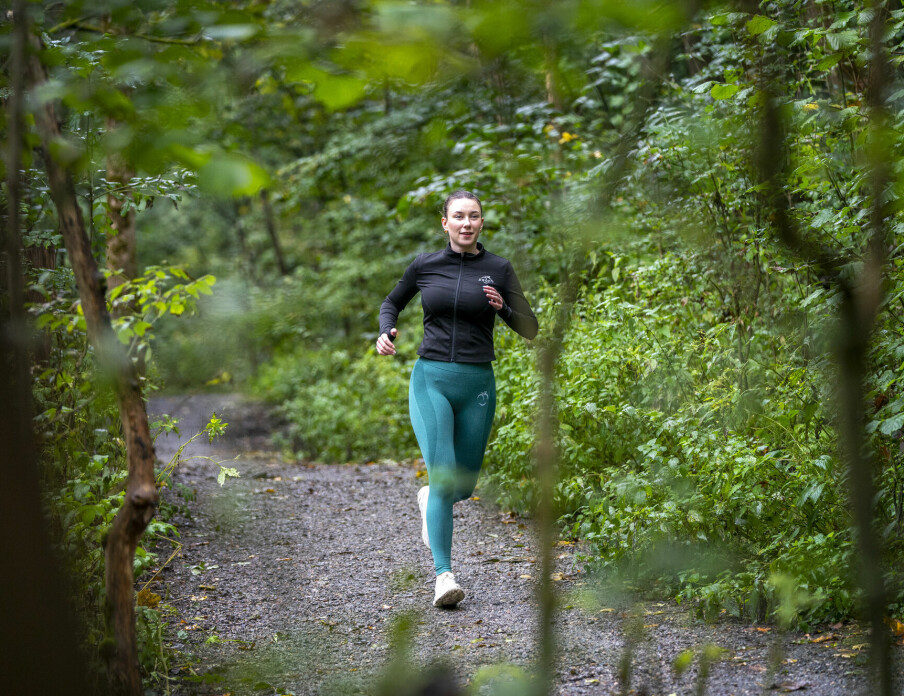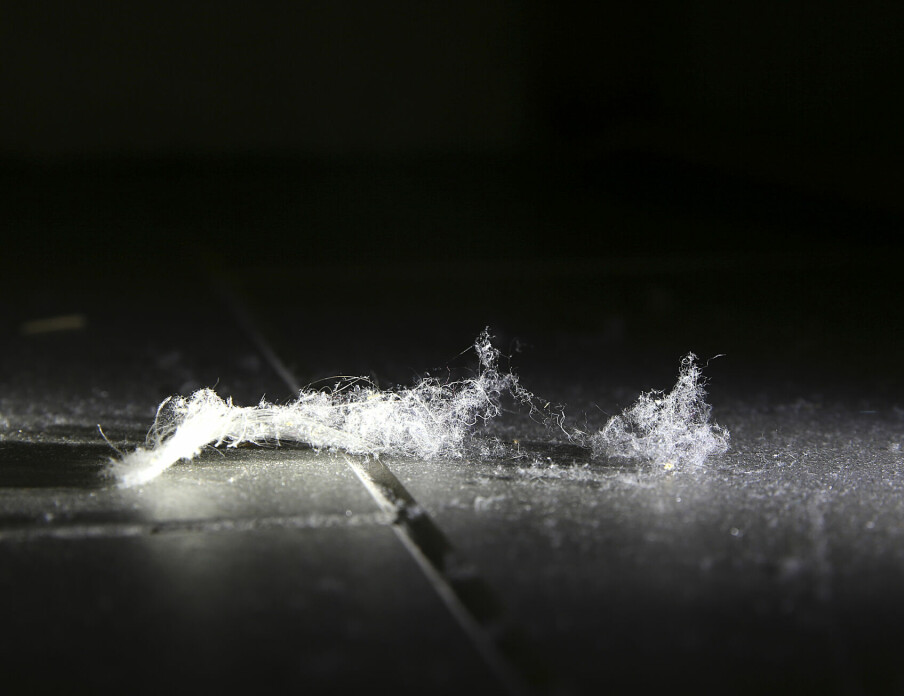Share your science:
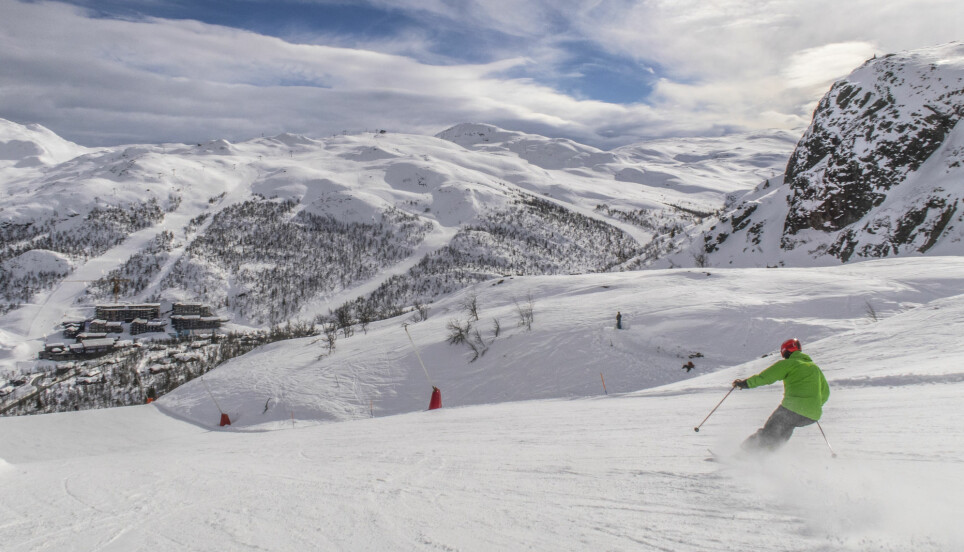
What are we willing to pay for sustainable alpine skiing?
SHARE YOUR SCIENCE: There is a limit when it comes to convenience.
Global warming is a threat to many tourism destinations relying on winter sports. Alpine skiing is no exception, and some estimates show that the ski season length will decrease with approximately one month in Norway – even in a low emission scenario.
How can the ski resorts contribute?
Ski resorts can do a lot of environmentally friendly activities themselves to cut the emissions. Examples include: (1) ensure energy comes from CO2-neutral sources, (2) use electric snow groomers, (3) make it easier for visitors to travel by environmental-friendly transportation (such as train, bus, electric cars), and more.
Another approach is to sell ski lift passes which include a “green fee” that can be used to offset the CO2 emissions left by the individual skier over the duration of the skiing period. This can for example be done by the purchase of CO2 quotas which matches the (average) emissions over a given period (for example a season).
What are the skiers willing to pay?
In a recent survey we asked season pass holders at Norwegian ski areas to choose among four season pass alternatives:
- Alternative 1: A season pass that compensates for all CO2-emissions that can be related to the activity over the entire season and where the customer can choose form of transportation to/from the ski area.
- Alternative 2: A season pass that compensates for all CO2-emissions that can be related to the activity over the entire season and which is only valid in combination with a ski bus to/from the ski area.
- Alternative 3: A season pass that does not compensates for CO2-emissions, but that is only valid in combination with the use of a ski bus to/from the ski area.
- Alternative 4: A completely regular season pass that does not compensate for CO2 emissions and which lets you choose transportation to/from the ski area.
Each season pass alternative was also presented together with a price level of either 2000, 3000, 4000, 5000, 6000, or 7000 NOK (1000 Norwegian krone translates to approximately 100 euros). In the choice experiment, the respondents had to evaluate all 24 season pass alternatives (6 price levels x 4 variants) by considering 12 choice sets. One example of such a choice set is illustrated below.
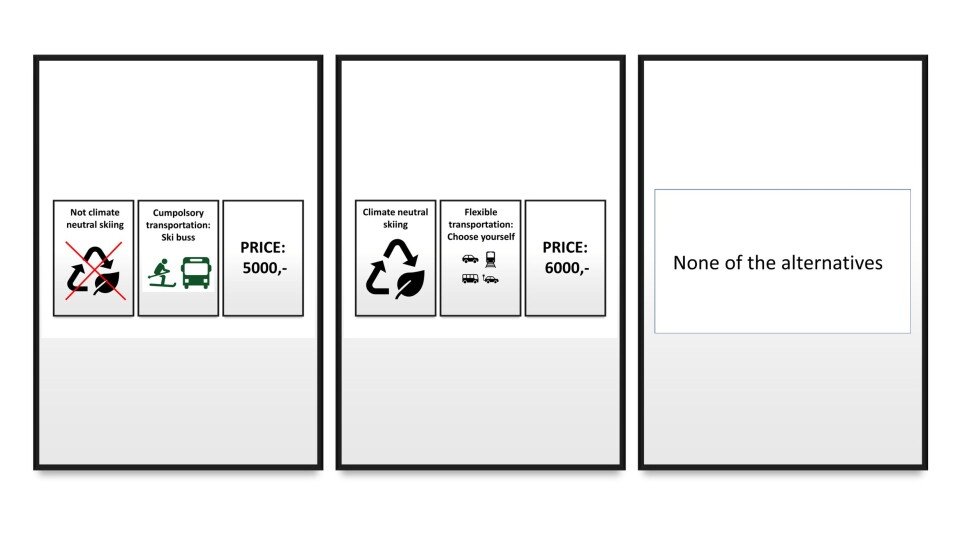
Popular CO2 compensation
The choices can then be aggregated to obtain the demanded quantity for all 24 choice alternatives. We have done this in the figure below. The result? The season pass which includes CO2 compensation of all emissions that can be related to the activity is most popular.
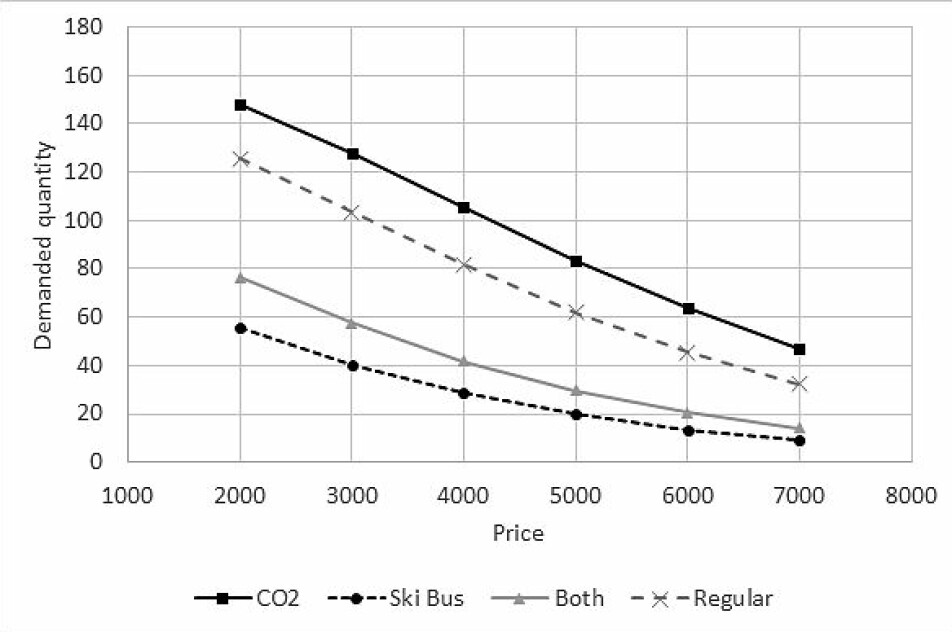
The optimal price (=profit maximizing price) for this season pass variant is almost 12 percent above that of a regular season pass. The season pass which includes (or perhaps more precise: requires) the use of ski bus to/from the ski area is least attractive.
One might think that the inclusion of bus transportation would increase the demand for the season pass. The opposite seems to be case and suggests that alpine skiers and snowboarders are willing to pay a lot to keep the flexibility of choosing transportation to/from the ski area.
Willingness to pay at least something
What implications do the results have for ski resorts and other service industries thinking of implementing “green” variants of their services? It is likely that a non-negligible share of your customers that are willing to pay at least the amount required to compensate for the CO2-emissions relating to the activity. We found that 26 percent of the respondents were willing to pay at least something for CO2 compensation and that the average willingness to pay among these was 613 NOK extra (approximately 60 euros or 71 US dollars) for a season pass at a Norwegian ski area.
If you are more interested in making your customers change their behavior in a “green” direction, for example by making them use public transportation to/from the area where your service takes place, you probably have to offer such entrance tickets at a discounted price.
To sum up: Norwegians seem to be interested in doing something about climate change challenges, but not so much if it reduces the convenience associated with going alpine skiing.
Share your science or have an opinion in the Researchers' zone
The ScienceNorway Researchers' zone consists of opinions, blogs and popular science pieces written by researchers and scientists from or based in Norway.
Want to contribute? Send us an email!







